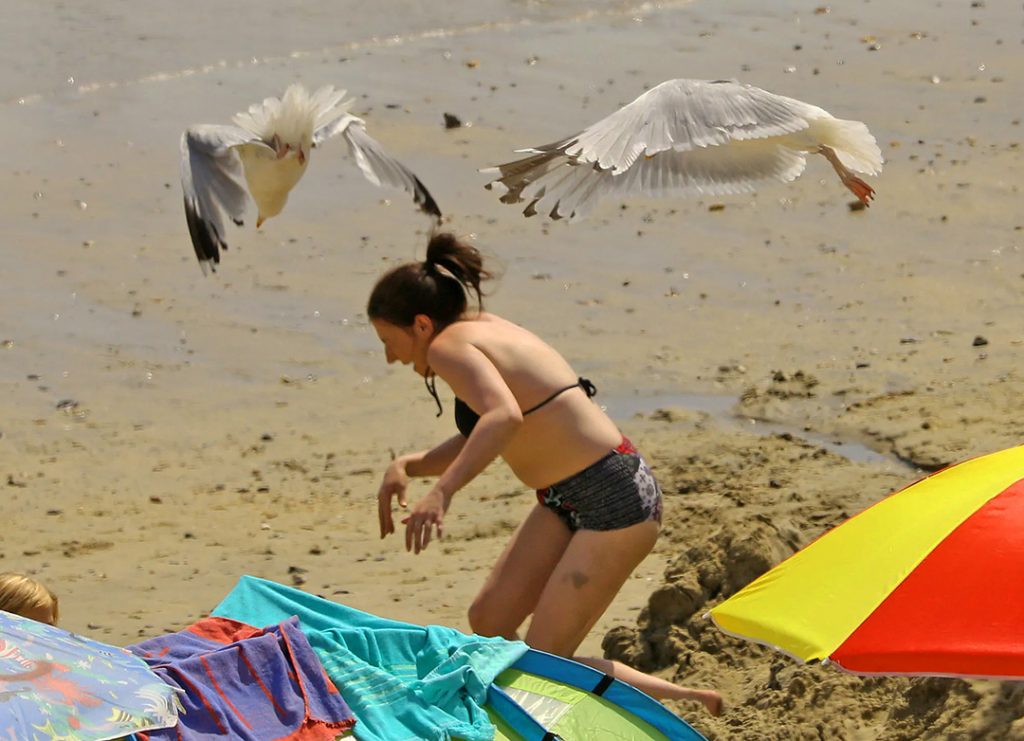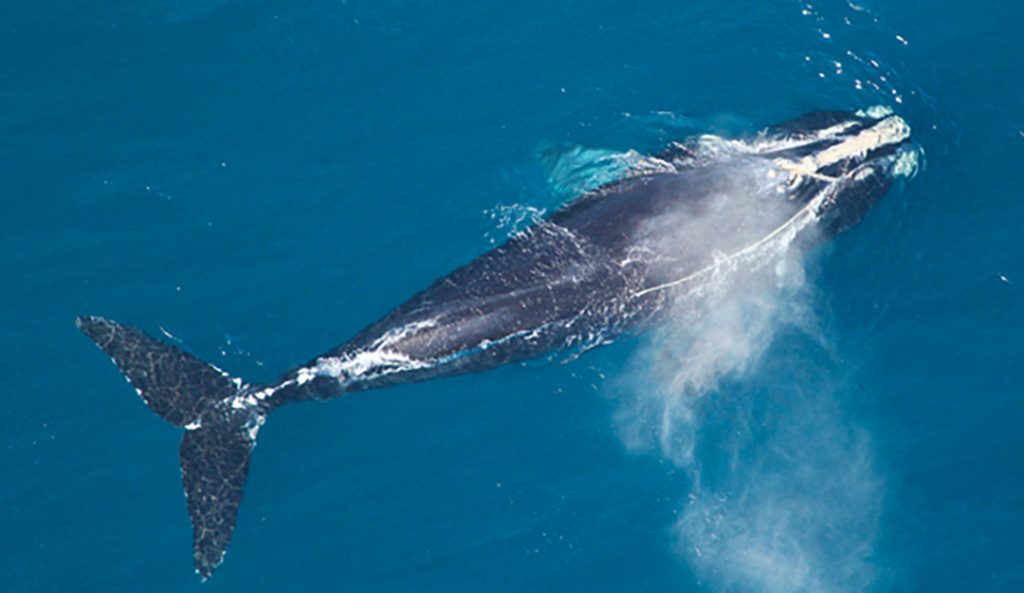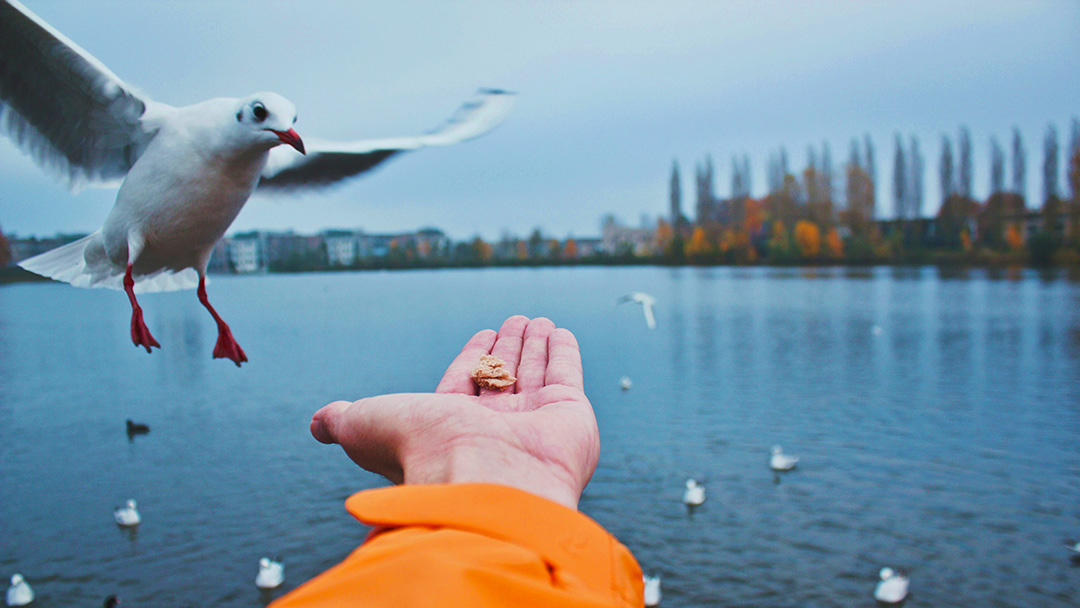On a recent walk around Great Island Common, I noticed a squabble of seagulls surrounding a middle-aged couple. The couple was throwing something to the birds, and the birds were voraciously filling themselves with the food.
It turned out to be bread. Bread is actually quite harmful to birds – it doesn’t give them any nutrients, but they feel full, and stop seeking the natural food they need to survive.
Small birds like chickadees can even freeze to death on a stomach full of bread. See Bread is Bad for Birds – The Backyard Naturalist
I suggested to the couple that they stop feeding bread to the seagulls.
“It can’t hurt, just this once,” the man said. The woman added that it was winter, and the poor birds had nothing to eat.
Never mind that we were on Great Island Common, next to the ocean. Birds from inland lakes come here to fish in the winter because the ocean doesn’t freeze, and is full of fish, crabs, snails and other food.
The couple had good intentions, but their behavior was harming the animals they meant to help. A little common sense can go a long way in ensuring that our interactions with wildlife are positive for them, and for us.
Over the coming weeks, various animals will be emerging from hibernation or returning from southern climates as part of their migration pattern. Our region will also welcome increasing numbers of visitors from out of state.
It’s a good time for viewing wildlife, but we must always remember that wild birds and animals deserve our respect – and our distance. Our interactions with wildlife – whether it’s feeding inappropriate food to them or getting too close for a selfie – can have grave consequences.
There are laws on the books that prohibit such behaviors as eating seagulls and keeping seals as pets. If there’s a law against it, you can be sure someone has tried it.
Consider the following tips for maximizing your encounters with the natural world in a responsible manner.
Don’t feed seagulls
It might seem like fun to toss some of your food to a nearby seabird, but this activity is problematic for several reasons.
First, the birds will stop looking for food from their natural diet. Feeding gulls may also discourage them from leaving the area, interrupting their migratory behavior.
It also tends to attract larger and larger groups of seagulls. They become competitive for the free food, and their aggressive behavior may including attacking people to get a bite.

In some cases, seagulls have tried to bite off the fingers of small children.
Food left over from feeding the gulls may attract other animals that you don’t want to meet at the beach, like raccoons and coyotes. (And if you think “wild animals” like these don’t inhabit Portsmouth or nearby towns, guess again – last fall, a lynx was spotted in New Castle.)
Keep your distance from seals and seal pups
It can be exciting to see a seal, but whether it’s on land or in the water, don’t get too close. The National Oceanic and Atmospheric Association (NOAA) states, “Close encounters with people can be harmful and continued disturbances may cause stress, including causing mothers to abandon their pups.”
If a seal fidgets, stares at you or slips into the water, you’re too close. NOAA advises keeping a 50-yard distance from seals (half a football field). Be sure to keep dogs leashed around these marine mammals, to prevent injuries to your dog and the seals.
Don’t get close to whales or other aquatic animals, either
If you encounter a whale while boating, it’s best to stay at least 100 yards away (the length of a football field). Federal law stipulates that boaters maintain a distance of 500 yards from North Atlantic right whales.

North Atlantic Right Whale
Don’t approach whales or dolphins when calves are present, and never place your vessel between a mother whale and a calf.
Do not pursue whales or other animals, and in their proximity, operate at a no-wake speed. Limit your observation time to 30 minutes or less.
For more information
The natural world is full of fascinating creatures, and we are fortunate to have diverse animal populations in the seacoast region. With a little common sense and care, we can enjoy these animals without disturbing them or putting them or ourselves at risk.
The NOAA site has extensive information about marine mammals and best practices for observing them. Visit https://www.fisheries.noaa.gov/topic/marine-life-viewing-guidelines/guidelines-&-distances










